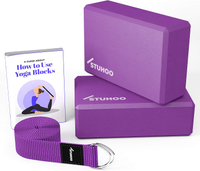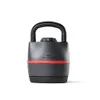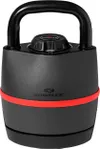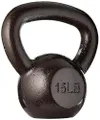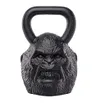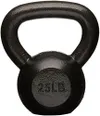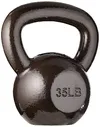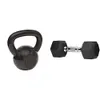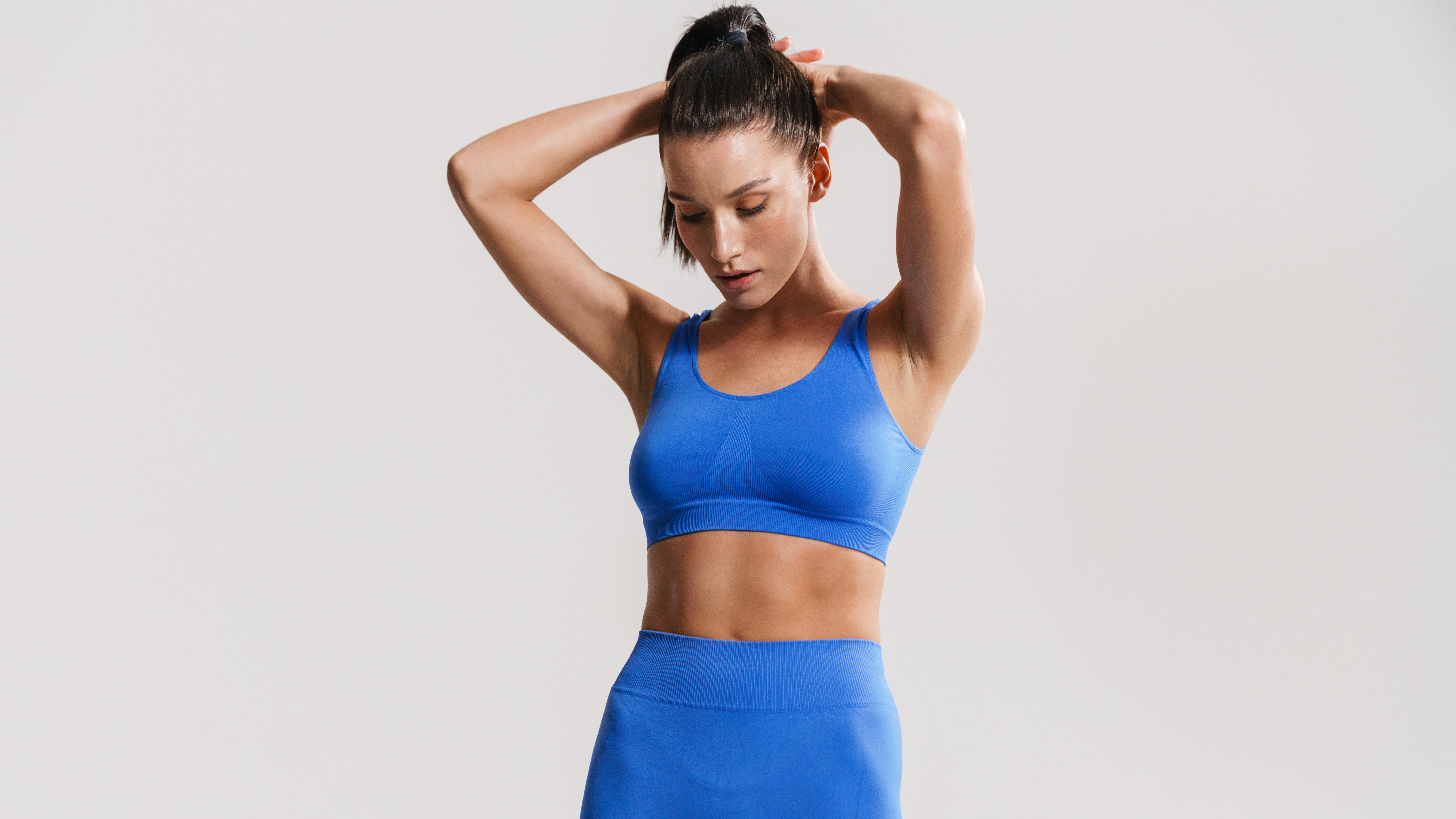
Grab a yoga block and give this five-move bodyweight workout a try. It’s perfect for anyone who doesn’t have weights available at home or on the go but does have a yoga block and one of the best yoga mats to hand.
Each move is supportive of your lower back, so you can work from the floor without excessive strain or the danger of overextension or overflexion. For those of you looking to kick up a midsection-melting burn, this 25-minute session might just surprise you — you can still build stronger muscles without lifting heavier weights, and you can kick planks to the side at the same time.
Watch the 5-move abs workout with yoga blocks
When I can’t make it to the gym, the one way I enjoy getting an ab workout done is by getting creative with the equipment I do have access to — often a resistance band or yoga block if I don’t fancy getting down with my kettlebells.
This short 25-minute session focuses primarily on the abs and obliques through a series of gentle rotational, flexion and extension exercises, hitting the muscles hard without overloading your lower back.
The aim of the game is conscious contraction using the block to help you be more aware of your positioning while providing some extra resistance. Engage as many muscles as you can while performing each exercise. You’ll work for 30 seconds back to back, completing all 5 movements, then rest for 30 seconds. Aim for 8 rounds.
Here are the exercises:
- Alternating V-sits x 30 seconds
- Crunches with a 2-second hold x 30 seconds
- Crunches with single-leg raise (left side) x 30 seconds
- Crunches with single-leg raise (right side) x 30 seconds
- Seated up-and-over x 30 seconds
- Rest 30 seconds
You have a few crunch variations to work through; the first includes a crunch with a 2-second pause, so focus on squeezing your stomach muscles as much as you can at the top, then slowly lower your upper back to the mat each rep. Try to keep your chin tucked as you reach upward to avoid straining your neck.
Sign up to get the BEST of Tom's Guide direct to your inbox.
Get instant access to breaking news, the hottest reviews, great deals and helpful tips.
The crunches with leg raises should be performed 30 seconds on the left, then 30 seconds on the right; again, focus on looking straight ahead or slightly lean back and look toward the ceiling if that feels more comfortable for your neck. Focus on pressing your forearm into the block and contracting your stomach as you hold the crunch position and lift and lower your leg with control.
I recommend counting the reps on one side so that you're working each side equally, then try to hit the same number of reps or beat them for the remaining rounds.
Adopt the same position as you would for Russian twists when performing the seated up-and-over exercise — slightly lean back, keep a long and straight spine and relax your shoulders, keeping your chest proud. You could lift one leg up and over at a time, bend your knees to make the exercise more accessible, or remove the block.
STUHOO yoga blocks and strap: $8 @ Amazon
This pack includes two yoga blocks and an an extra long 8ft strap to help you correct alignment and delve deeper into poses while building flexibility and mobility. The pack also comes with a free e-Book visuals guide.
What are the benefits of the ab workout?
For those who are unfamiliar with the individual muscles making up your core, it can be a little confusing working out which muscles do what. I’ve put together a handy guide on abs vs core muscles which explains the difference, but as a general rule of thumb, think of your abs (the rectus abdominis) as the muscles that run down the front of your stomach. If your body fat percentage is low enough, you might be able to see this muscle definition, known as your six-pack.
Don’t worry if you can’t — there’s more to life than how defined your ab muscles look, and strength doesn’t just come from looking sculpted (read: hypertrophy vs strength training: the difference between building strength and muscle).
More importantly, the abs muscles, while superficial, work during flexion-extension of the spine, like during sit-ups and crunches. If you want to strengthen them, these sorts of movements may be your go-to. I like subbing them out for the best abs exercises for sciatica if and when I decide to change things up. Besides, sit-ups and crunches aren't for everyone, and exercises specifically for sciatica are kind to your lower back.
Lateral flexion-extension (side bends, for example) and rotational movements hit the internal and external obliques, and movements like leg raises (hanging or laying) can help recruit the hip flexors and deeper core muscles that help stabilize and support your spine and torso.
Of course, there are many more exercises, muscle groups and movement patterns to consider, but working in multiple planes of motion will help you hit more muscle groups more efficiently.
Before you try this workout, always consult a qualified medical professional if you’re suffering from an existing injury or are new to exercise before starting a new exercise program. Stop if you experience pain or feel unwell.
Verdict
This workout specifically works under the time under tension technique as you’ll be working consistently for 2 minutes 30 seconds unbroken, then taking 30 seconds of rest, repeating for a spicy 8 rounds.
Time under tension, as the name suggests, means holding muscles under tension or contraction for longer through a range of motion. Basically, slowing an exercise down. It’s particularly useful during bodyweight workouts when you can’t rely on weight to overload the muscles. Give it a go!
More from Tom's Guide
- No, not sit-ups or crunches — this is the one low-impact exercise you should try to strengthen your core instead
- Pilates instructor shares a 20-minute Pilates workout for developing healthy hips and strengthening your lower body
- 3 strength exercises you can do with a yoga block that aren't ab exercises

Sam Hopes is a level 3 qualified trainer, level 2 reiki practitioner and senior fitness writer at Tom's Guide. She is also currently undertaking her Yoga For Athletes training course. Sam has written for various fitness brands and websites over the years and has experience across brands at Future such as Live Science, Fit&Well, Coach, and T3.
Having worked with fitness studios like F45 and Virgin Active, Sam now primarily teaches outdoor bootcamps, bodyweight, calisthenics and kettlebells. She also coaches mobility and stretching-focused classes several times a week and believes that true strength comes from a holistic approach to training your body.
Sam has completed two mixed doubles Hyrox competitions in London and the Netherlands and finished her first doubles attempt in 1:11.
